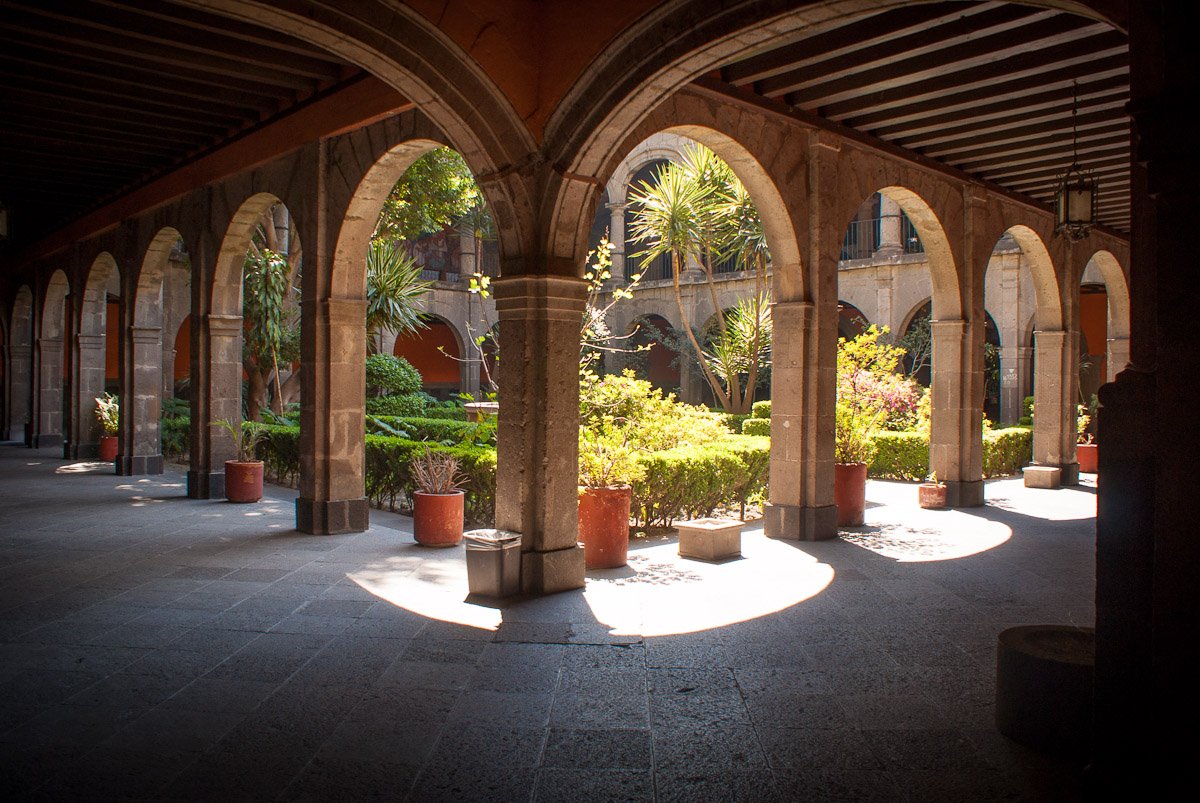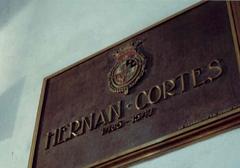
Hospital De Jesús Nazareno: Visiting Hours, Tickets, and Historical Information – Mexico City
Date: 14/06/2025
Introduction
Hospital de Jesús Nazareno is a cornerstone of Mexico City’s colonial and medical heritage. Founded in 1524 by Hernán Cortés, it is widely recognized as the oldest continuously operating hospital in the Americas. Standing in the heart of the city’s UNESCO-listed historic center, this hospital is not only a functioning medical institution but also a living museum reflecting the fusion of Spanish and Indigenous worlds, centuries of architectural evolution, and an enduring charitable mission. This guide offers a comprehensive overview of the hospital’s history, architecture, legends, visiting information, and significance within Mexico City’s vibrant urban landscape (Instituto Nacional de Antropología e Historia; Mexico Desconocido).
Table of Contents
- Origins and Foundation
- Architectural Evolution
- Cultural and Historical Significance
- Visitor Information: Visiting Hours, Tickets, and Accessibility
- Role in Mexico City’s Heritage
- Legends and Lore
- Medical Impact and Historical Significance
- Visiting Hospital De Jesús Nazareno: Practical Information
- Visitor Insights
- Frequently Asked Questions (FAQ)
- Visuals and Interactive Elements
- Internal and External Links
- Further Reading and Sources
Origins and Foundation
Established in 1524 by Hernán Cortés, Hospital de Jesús Nazareno was envisioned as a charitable institution providing care to the sick and poor regardless of ethnicity or social status—a progressive concept for its era (Instituto Nacional de Antropología e Historia). Its site, near the ancient causeway connecting Tenochtitlán with the mainland, symbolized the bridging of Indigenous and Spanish societies (Mexico Desconocido).
Architectural Evolution
Colonial Foundations
The hospital’s original structure was modest, but over centuries, it expanded with courtyards, wards, and a chapel featuring a baroque interior (Secretaría de Cultura CDMX). Notable colonial architects contributed to its construction, including Pedro Vázquez and Francisco Antonio Guerrero y Torres.
18th–19th Centuries
Neoclassical influences appeared with new wings and improvements to ventilation and lighting. Despite reforms affecting religious institutions, the hospital maintained its charitable roots.
20th Century to Present
Modernist architect Jorge Villagrán designed an addition in 1934, enveloping original colonial elements while respecting their integrity (Mexico Desconocido). Today, the hospital’s blend of colonial, baroque, neoclassical, and modernist styles illustrates Mexico City’s layered history (INAH).
Cultural and Historical Significance
Hernán Cortés’ Legacy
The hospital houses the tomb of Hernán Cortés, located in a chapel that draws visitors interested in Mexico’s conquest history (El Universal). This feature underscores the site’s importance as both a historical and cultural landmark.
Role in Public Health
Hospital de Jesús Nazareno pioneered inclusive healthcare, treating Indigenous peoples, mestizos, and Spaniards. It played key roles during epidemics and contributed to the development of Mexico’s dual medical system (UNAM Revista).
Artistic and Religious Heritage
The hospital’s chapel is adorned with baroque altarpieces and religious art that reflect the fusion of European and Indigenous influences. It remains an active place of worship (Secretaría de Cultura CDMX).
Visitor Information: Visiting Hours, Tickets, and Accessibility
Location
- Address: Avenida 20 de Noviembre 82, Centro Histórico, Mexico City
- Accessibility: The hospital is easily reached via Metro Line 2 (Allende station) and various bus routes (MexicoCity.cdmx.gob.mx).
Visiting Hours
- Historical Areas: Tuesday–Sunday, 9:00 AM–5:00 PM. Closed Mondays and major holidays.
- Medical Services: 24/7 for emergencies (Hospital de Jesús official site).
Tickets and Admission
- Entry: Free to historical areas and chapel. Guided tours may require advance booking and a nominal fee (Secretaría de Cultura CDMX).
Accessibility
- Facilities: Ramps and accessible pathways are available, though some historic areas may pose challenges. Visitors with mobility concerns should inquire in advance.
Travel Tips
- Best Time to Visit: Early weekday mornings to avoid crowds.
- Etiquette: Remain respectful; the hospital is an active medical center.
- Photography: Allowed in most public areas but restricted inside the chapel.
Role in Mexico City’s Heritage
Being part of the UNESCO World Heritage-listed historic center (UNESCO), the hospital is integrated into the city’s vibrant network of colonial landmarks. It offers educational programs, cultural events, and a tranquil retreat amidst the urban bustle (Condé Nast Traveler).
Legends and Lore
Cortés’ Restless Remains
Hernán Cortés’ remains experienced numerous exhumations and secret reburials to protect them from political turmoil, ultimately being rediscovered and reinterred in the hospital’s chapel in 1946. This secretive history inspires ghost stories and adds to the site’s mystique (Texas Standard; Academia.edu).
The Pirate Doctor
Dr. Guillermo Ricart, an Irish physician executed by the Inquisition for his Lutheran beliefs, is another legendary figure associated with the hospital, highlighting the dangers faced by early medical practitioners (Texas Standard).
Mythical First Encounter
While legend claims the hospital sits on the site of Cortés and Moctezuma II’s first encounter, historians debate this, but the myth endures (Academia.edu).
Indigenous Foundations
The hospital overlays the indigenous site of Huītzillan, symbolizing the “monumental form of oblivion” where colonial structures replaced indigenous landscapes (Academia.edu).
Medical Impact and Historical Significance
- Oldest Hospital in the Americas: Founded in 1524 and still operational (Texas Standard).
- Crossroads of Medical Traditions: Spanish and Indigenous medical practices blended, laying the foundation for Mexico’s dual medical system (Mexico Histórico).
- Medical Education: Site of the first autopsy in the Americas and a pioneer in medical education (Mexico Histórico).
- Charitable Mission: Continues to serve as a nonprofit institution focused on care and inclusivity.
- Modern Relevance: Integrates historic architecture with contemporary medical facilities, reflecting continuity and innovation (Texas Standard).
Visiting Hospital De Jesús Nazareno: Practical Information
- Guided Tours: Available in Spanish and English; book ahead for detailed historical and medical insights.
- Nearby Attractions: Walking distance to the Zócalo, Metropolitan Cathedral, and Templo Mayor.
- Highlights: Bust of Cortés, baroque chapel, colonial courtyards, murals by Antonio González Orozco.
Visitor Insights
A visit offers more than historical curiosity: it’s an immersion in centuries of cultural exchange, architectural splendor, and living traditions. The hospital’s tranquil courtyards, richly decorated chapel, and layered legends invite contemplation and discovery (Condé Nast Traveler).
Frequently Asked Questions (FAQ)
Q: What are the visiting hours?
A: Tuesday–Sunday, 9:00 AM–5:00 PM. Closed Mondays.
Q: Is admission free?
A: Yes, admission to historical areas is free. Guided tours may require a fee.
Q: Are guided tours available?
A: Yes, in Spanish and English by advance reservation.
Q: Is the hospital accessible for visitors with disabilities?
A: Ramps and accessible restrooms are available, though some historic areas may be challenging.
Q: Can I take photographs?
A: Allowed in most areas, but restricted in the chapel. Always ask staff for permission.
Visuals and Interactive Elements
Alt tags: “Hospital De Jesús Nazareno entrance Mexico City,” “Chapel interior with Hernán Cortés’ tomb,” “Map of Mexico City historical sites including Hospital De Jesús Nazareno.”
Internal and External Links
Explore more about Mexico City’s historical landmarks:
Further Reading and Sources
- Instituto Nacional de Antropología e Historia
- Mexico Desconocido
- Secretaría de Cultura CDMX
- MexicoCity.cdmx.gob.mx
- El Universal
- UNAM Revista
- Texas Standard
- Academia.edu
- Mexico Histórico
- Condé Nast Traveler
- AP News
Summary and Travel Tips
Hospital de Jesús Nazareno exemplifies Mexico City’s layered history, resilient culture, and medical innovation. As the oldest hospital in the Americas, it remains a beacon of inclusivity, architectural beauty, and living heritage. Free entry, accessible facilities, proximity to major landmarks, and a blend of legend and historical fact make it a must-visit site for travelers, history enthusiasts, and cultural explorers (Texas Standard; Instituto Nacional de Antropología e Historia).
Plan your visit, consult official resources, and use digital guides such as the Audiala app for curated experiences and updates on Mexico City’s most iconic sites.











































































































































































